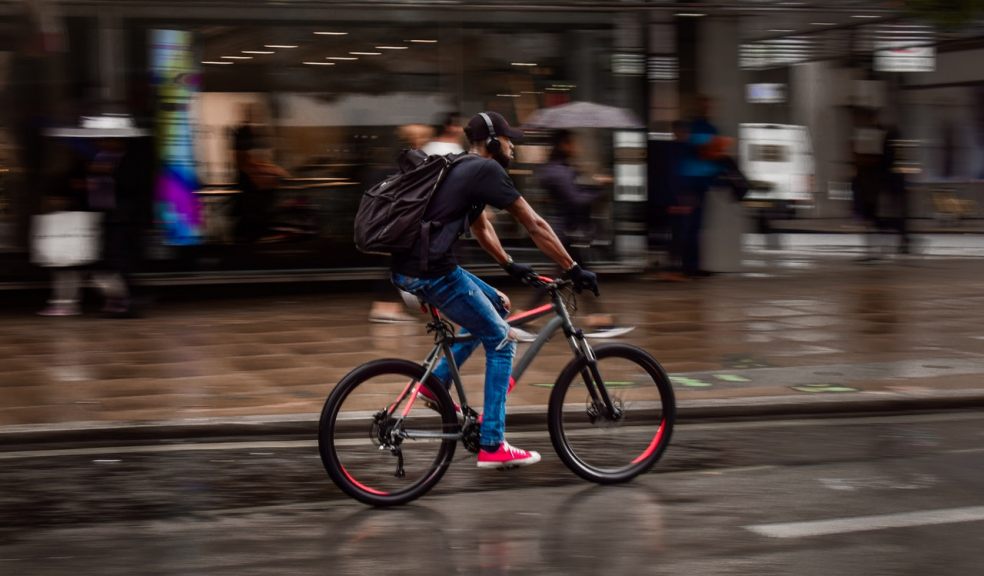
Tips In Commuting By Bike In The Rain
Fun, scary, frustrating, social, romantic - cycling has these magical abilities to be whatever the rider wishes it to be. Biking is a perfect way to remain healthy and connected to the world around you, whether you’re using it for recreation or transportation.
As it increases the metabolic rate, cycling is a healthy way to regulate or lose weight and develop muscle, and burn body fat. Cycling needs to be paired with a balanced eating schedule if you're trying to lose weight. Research indicates that you should use exercise to burn at least 8,400 kilojoules (about 2,000 calories) a week. Around 1,200 kilojoules (about 300 calories) per hour are burned by steady cycling.
Different Types Of Bicycle
- Mountain bike. This type is perfect for those cyclists who love trails and fun adventures.
- Road bike. As its name suggests, this type is commonly used by riders pedaling down on the street.
- Track bike. It is used in a racing sport where cyclists zoom around a velodrome.
- Commuter bike. A mixture of road and mountain bike where you can gain by being able to do what you want, or when you want to.
Unfortunately, the weather does change frequently, and bad weather is an obstacle especially for a novice biker. It is one of the reasons why these bikers rather choose some options like buses, cars, limousines, Uber, taxes, subways, or any other transportation services. Or better yet, they would instead opt to walk with an umbrella or raincoats, or not leave at all when heavy rain is pouring. However, commuting by bike in rain shouldn’t be a worry at all.
According to the author of Fit Chick, you will flourish as a cyclist like a flower in May, riddled with abilities and talents that will burst into the rest of your life, until you accept the weather that others eschew. You might really begin to enjoy riding in the rain before you know it.
Learning and knowing how the bike handles and how to handle the bike in the rain is essential, as well as how to dress to be secure and comfortable in these circumstances.
Essential Tips When Cycling In The Rain
Here are some guidelines a commuter should know when cycling in the rain:
Invest In Waterproof Clothes
A jacket is the most important clothing item that can protect you from the rain. A good waterproof jacket not only keeps your clothes dry, it can also help regulate your body temperature. More so, use a waterproof shoe cover and or spare a pair of socks and undergarments in your office if ever get soaked.
Use Waterproof Accessories
To avoid the bag from getting wet, use waterproof bags and zip lock bags to ensure things like phones, documents, etc. from getting wet. It is also recommended to use bike cover if a shed or garage isn’t available, exposure to moisture and UV light can damage and shorten the lifespan of the bike. Other accessories like mudguards, gloves, lights or a solid beam, rain caps to be extra dry and look bizarre.
Know The Techniques In Cycling When It Rains
The road is definitely wet and slippery when raining, thus it could be dangerous to hit the road. Learn to slow down the speed and prepare to grasp the handbrakes. Focus on the road and be mindful to not point the light or beam towards the other driver.
Check Tires And Reduce Pressure
When your tires are wet, they pick up more mud on the road than usual. Thus, make sure to take a look over your tires for glass, flints, and other debris, as these may cause you accidents. Check also for cuts in your tire that can weaken the carcass of your bike.
Cycling is fun, but cycling in the rain is not just about having fun. It’s about being prepared and responsible for oneself since one cannot really know the dangers that may happen on the wet, slippery pavement. Cyclists must be responsible to prepare themselves as well as the bicycle before beginning pedaling. Knowing the essential guidelines would be a great help to elude accidents and have enjoyable biking with the benefit of a healthier lifestyle.


















